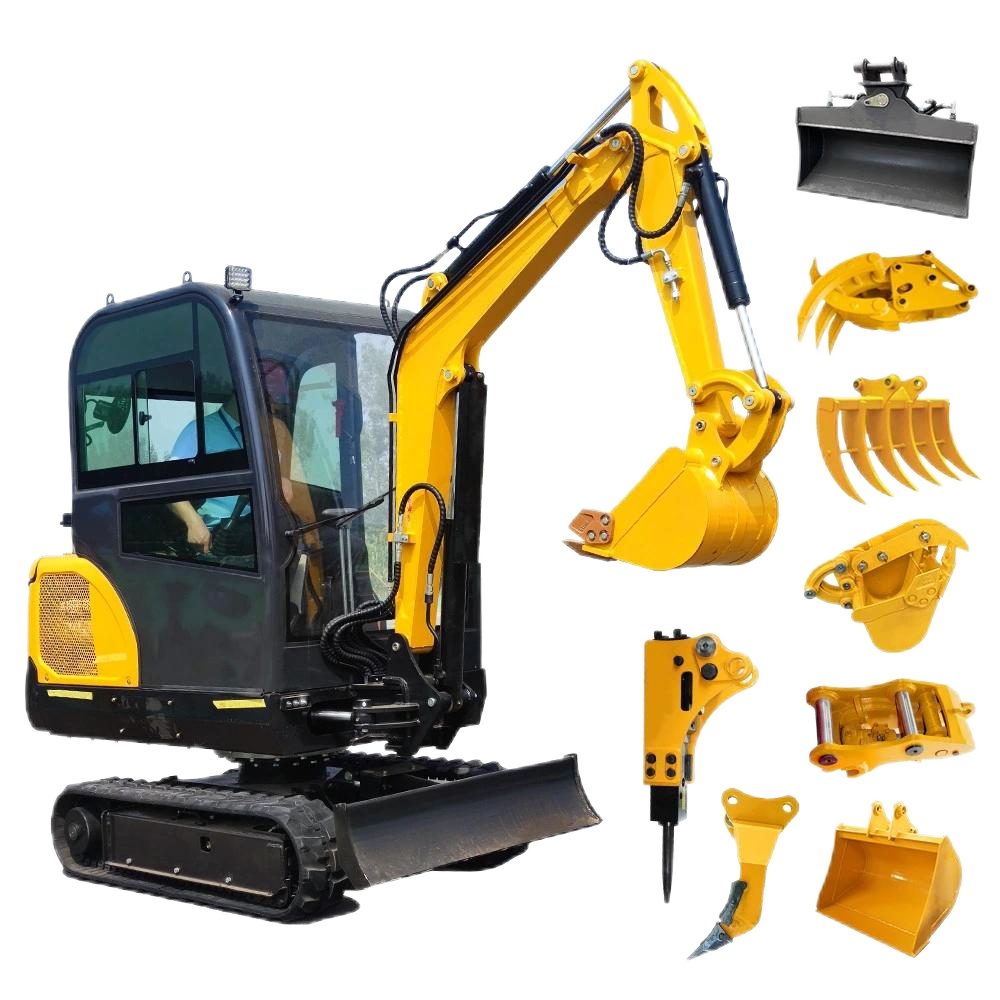The 8-ton excavator, due to its moderate size and flexible operation performance, can be widely applied in various engineering scenarios, mainly including the following aspects:

Earthwork Projects
- Excavation Operations: It can be used to excavate various types of soil, such as clay, sand, etc., and carry out works like foundation excavation and ditch digging. In construction projects, it is used to dig the foundation pits of buildings, preparing for the subsequent construction of building structures; in municipal engineering, it can dig ditches such as drainage pipelines and cable trenches.
- Site Levelling: By operating its bucket and forearm, it can level the excavated site, making the ground reach the required flatness as per the design, thus creating favorable conditions for the subsequent construction processes. For example, when constructing parks, squares and other sites, it is used to level the land, preparing for works like laying floor tiles and planting lawns.
- Material Handling: It can load the excavated earthwork onto transportation vehicles to achieve the transfer and transportation of the earthwork. In some small-scale earthwork projects, it can also directly transport the earthwork to the designated stacking places, completing the short-distance handling of materials.
Municipal Engineering
- Road Construction: It participates in works such as the excavation of the road base layer and the installation of curb stones in road construction. When laying a new road, the excavator can dig the road base layer, creating space for laying the roadbed and pavement materials; in road renovation projects, it is used to remove the old curb stones and dig new curb stone trenches for installing new curb stones.
- Pipeline Laying: It assists in the laying of various underground pipelines, such as water supply pipelines, gas pipelines, communication pipelines, etc. First, use the excavator to dig the pipeline trenches, then place the pipelines in the trenches, and finally carry out the backfilling operation.
- Urban Greening: In urban greening projects, it can be used for digging tree pits, transplanting trees, etc. The excavator can quickly and accurately dig tree pits suitable for tree planting, improving the planting efficiency; when transplanting large trees, the power of the excavator can also be used to dig out the trees from the original planting site and transport them to the new planting site for transplantation.
Rural Construction
- Farmland Renovation: It carries out operations such as land levelling and ditch and canal digging on the farmland, improving the irrigation and drainage conditions of the farmland and enhancing the production capacity of the farmland. For example, digging irrigation canals to make water resources be more effectively transported to every corner of the farmland; levelling the farmland to facilitate mechanized farming and the growth of crops.
- Rural Road Construction: It helps to build rural road facilities such as village roads and tractor roads. It carries out the excavation and renovation of the road foundation, providing basic conditions for the laying of the road, improving the traffic situation in rural areas, and facilitating the transportation of agricultural products and the travel of villagers.
- House Construction: When building houses in rural areas by oneself, it is used for digging the house foundation, handling building materials, etc. It can quickly dig out the foundation pit of the house, laying a solid foundation for the construction of the house; at the same time, it can also transport building materials such as sand and stones to the construction site, improving the construction efficiency.
Small-scale Demolition Projects
- Building Demolition: It can demolish some small buildings, such as abandoned houses, simple sheds, etc. Using the breaker hammer or bucket of the excavator, it damages and demolishes the structures such as the walls and roofs of the buildings, and cleans and transports the construction waste after demolition.
- Obstacle Removal: It removes obstacles on the construction site or roads, such as huge stones, abandoned concrete blocks, etc. Through operations such as excavation and breaking, it breaks the obstacles into smaller pieces, and then carries out handling and cleaning to ensure the flatness of the construction site and the smoothness of the road





